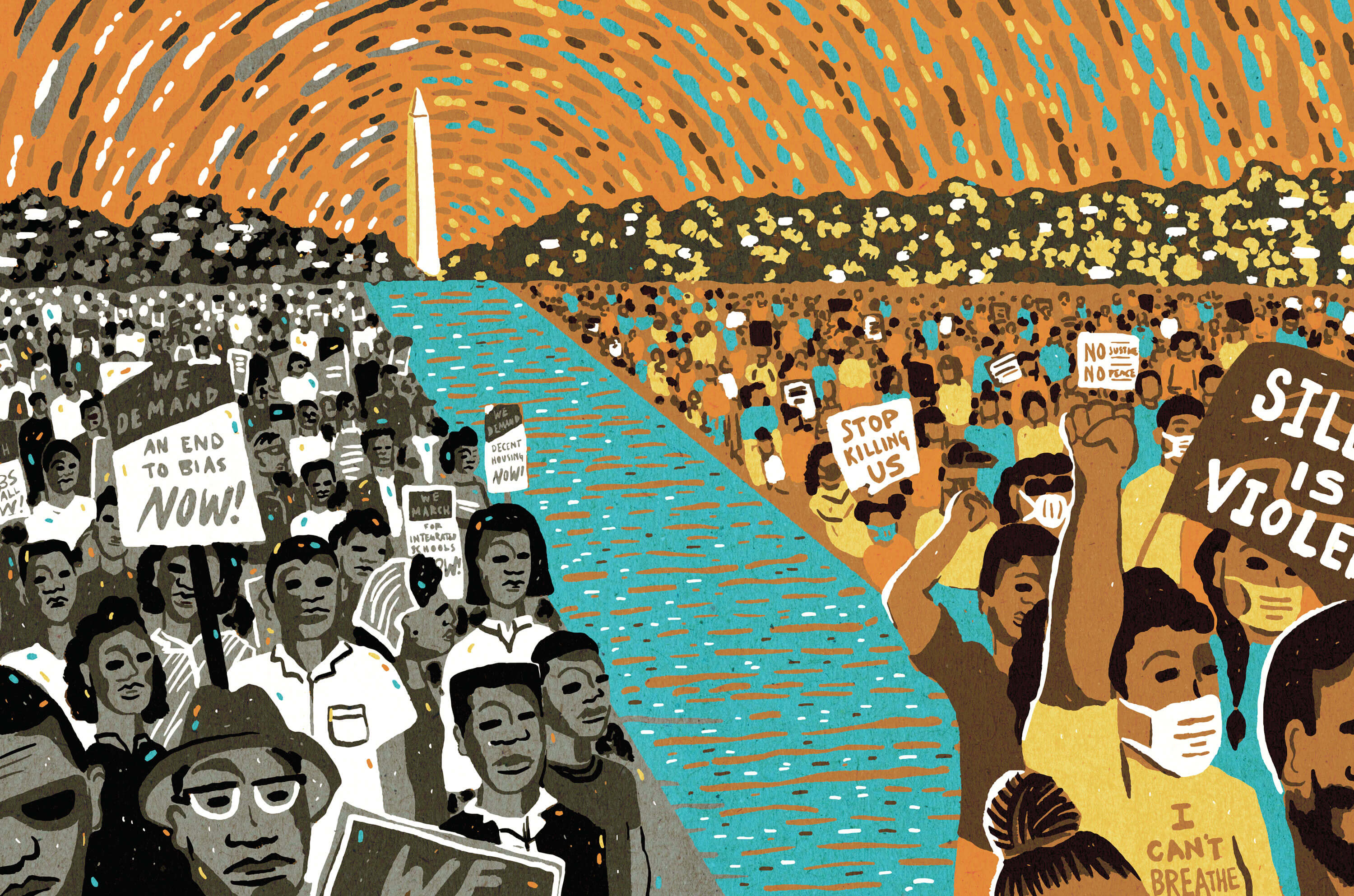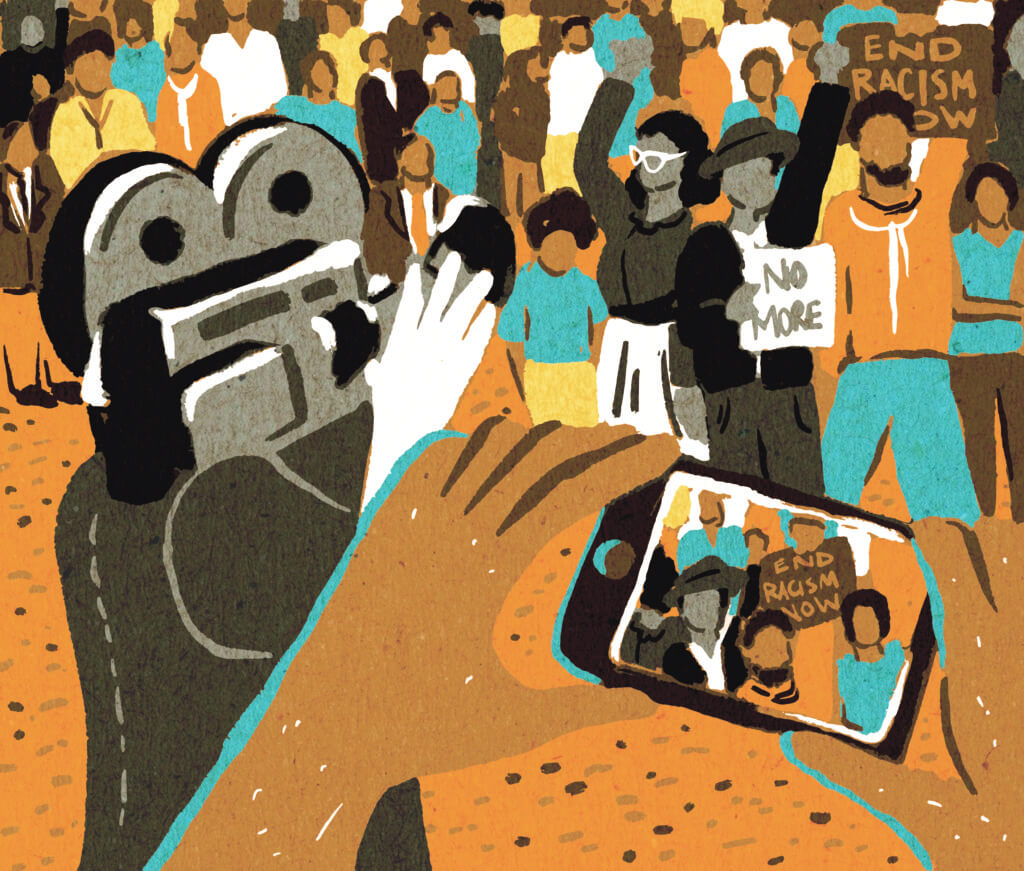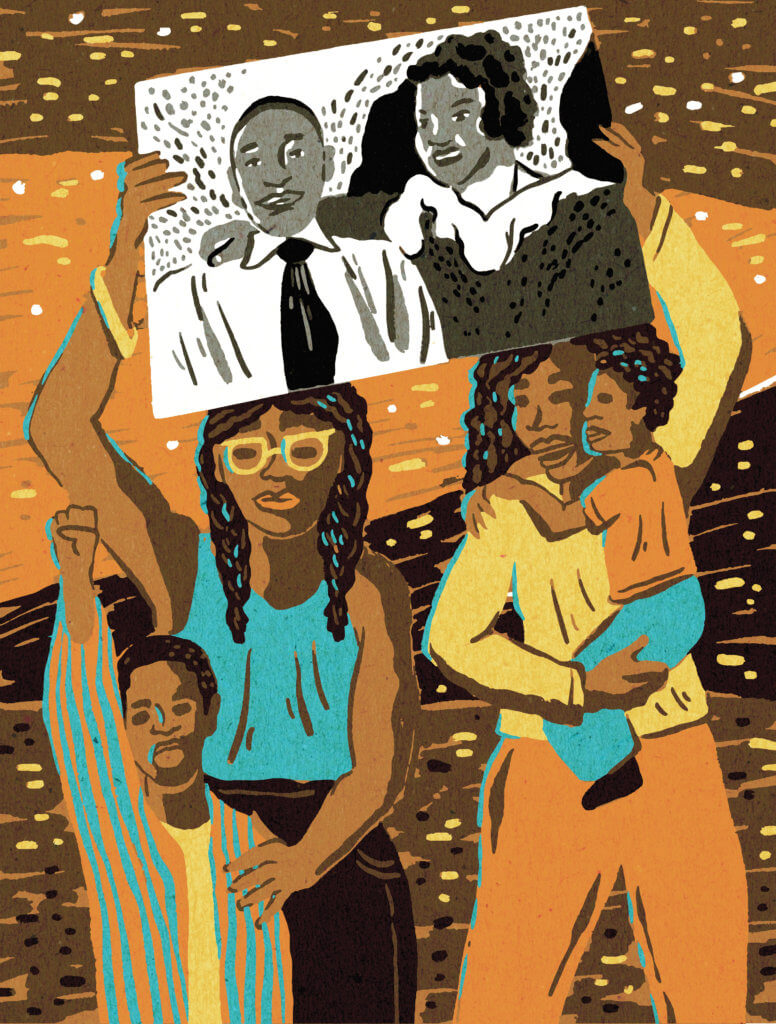
The Long Struggle
A Q&A on the civil rights movement, Black Lives Matter, and the ongoing fight for Black equality.
When George Floyd was killed on May 25, 2020, a cascade of protests, rallies, and conversations focused on topics such as systemic racism, police brutality, and Black equality erupted across the nation, ricocheting around the globe until it seemed as if the entire world was reciting the names of those who will forever be connected to this historic moment in time: George Floyd, Breonna Taylor, Ahmaud Arbery …
Many likened the renewed focus on the struggle for Black equality to the civil rights movement and the tragedies and tensions that sparked that earlier campaign for social justice in the 1950s.
But Assistant Professor of African American History Hettie Williams, Ph.D., a scholar of race and ethnicity studies, says we shouldn’t think of the two moments as separate but rather as two parts of a continuum that will persist until equality is achieved.
We asked Professor Williams about how the movement has transformed over the past 60 years, how the events of this year—including the COVID-19 pandemic—have shaped its current form, and what needs
to be done to continue moving toward achieving racial equality.
How does the Black Lives Matter movement compare to the civil rights movement of the 1950s and 1960s?
Rather than thinking of these recent Black Lives Matter protests as something distinct from the civil rights movement, I would argue they are part of a historical continuum. Black oppression and responses to it are not new but rather a continuation of what historians call the struggle for Black equality. George Floyd is the Emmett Till of the post-millennial generation.
Historians’ thinking on the civil rights movement has evolved. At first, scholars such as Stephen B. Oates, David Garrow, and Taylor Branch emphasized the figure of Martin Luther King Jr., and the time period from the Montgomery bus boycott in 1955 and 1956 to King’s death in 1968, when writing about the movement. That standard chronological framing came to be known as the “Montgomery to Memphis” narrative, and it was, in part, defined by movement participants such as King, who wrote several books about the movement while it was in progress.
Later historians challenged this approach to understanding the civil rights movement. Harvard Sitko 1 suggested the notion that the “struggle for black equality” is a more accurate term to describe the ongoing demand for civil rights by African Americans. One of his counterparts, John Dittmer, 2 em- phasized the role that local civil rights activists such as Amzie Moore, Fannie Lou Hamer, and Medgar Evers played in the fight against Jim Crow in Mississippi, as opposed to national leaders such as King. Charles Payne’s work 3 echoes Dittmer’s by promoting the concept of an “organizing tradition,” one that has always been a part of African American life and society, involving both middle-class and working-class people, or “local people.” More recently, historian Jacquelyn Dowd Hall redefined the parameters of the civil rights movement, 4 declaring it to be a movement that extends beyond the Mont- gomery to Memphis narrative.
Thus, many historians have come to think of the civil rights movement as a long struggle for Black equality, one that began before the 1950s and is ongoing. Black Lives Matter is a continuation of that struggle. The organization’s founders make it clear on their website that they draw on the organizing tradition operationalized during the height of the civil rights movement in the 1960s and beyond.
You mentioned Emmett Till, whose lynching in 1955 is often seen as the tipping point that mobilized civil rights activists across the country. Sadly, as was the case with Till, there were many wrongful deaths of Black people prior to George Floyd’s. Why do you think Floyd’s death became the tipping point for the large-scale mobilization we see today?
The death of children has always mobilized the Black masses. In many re- spects, the civil rights movement was— is—a woman’s movement. Mothers such as Mamie Till, who wanted the world to see her son’s mutilated body in an open casket, have led the struggle for Black equality for decades. George Floyd cried out for his mother in the video that went viral on social media, and women are once again at the forefront of this current demand for Black equality. 5Sybrina Fulton, the mother of Trayvon Martin, who was killed by George Zimmerman in 2012, has become a major figure in the struggle for Black equality. So Trayvon Martin is as much the Emmett Till of this generation as George Floyd or Tamir Rice or Michael Brown.
Floyd’s murder also took place amid a global pandemic, and African Ameri- cans have been disproportionately impacted by COVID-19. According to the Centers for Disease Control and Prevention, Black or African American people are dying at 2.4 times the rate of white-identified persons in the U.S. 6Thus, African Americans are fighting the twin pandemics of racism and COVID-19, and this has also shaped the current moment.
Furthermore, television media, new in the 1950s, helped to facilitate a mass movement that became the civil rights movement. Today, new media and technologies such as handheld cellphone videos have been instrumental in making possible this current struggle for Black equality.

It seems those technologies are helping to amplify the message as well, as we’ve seen Black Lives Matter protests taking place around the world in response to George Floyd’s death.
The struggle for Black equality has always been global. There was international mobilization for Black equality in the early 20th century as exemplified in the Pan-African Congress and the Pan-African Congress conventions from 1900 to 1927. These conferences brought together Black leaders from all over the world concerned about European imperialism, colonialism, and racism more generally. That said, the Garvey movement that flourished in the 1920s and 1930s was an international movement. In fact, Marcus Garvey’s organization, the Universal Negro Improvement Association (UNIA), was the most successful Black association for civil rights in world history, with an estimated 3 to 5 million members worldwide. The UNIA had chapters in the U.S., Latin America, Europe, Africa, and the Caribbean.
There have been attempts by President Donald Trump and some in the right-wing media to delegitimize the current protests and movement. Does their rhetoric in any way echo what was written or said about the civil rights movement in the 1960s?
Trump seems to resemble George Wallace, as many historians have noted. Wallace was a segregationist and governor of Alabama who eventually ran for president. He was also a populist who claimed to represent the common man and gained notoriety by standing in the door of the University of Alabama, which he sought to keep segregated. At that time, Martin Luther King Jr. was referred to by southerners as “Martin Luther Coon”; he was not embraced by the media or the public, as illustrated in a Gallup Poll of 1966 that showed King had a 63% negative rating among the American public.
Declassified FBI les have shown that the government’s COINTELPRO counterintelligence program 7 was used against King and several Black civil rights leaders who were constantly surveilled and harassed. And now Black Lives Matter members are being tracked across the country by the FBI, according to documents obtained by The Intercept. So the similarities are there.
What possible ramifications could this year’s presidential election have in helping or hindering the struggle for Black equality in this country?
American democracy is at risk. Those who support a democratic form of government in the U.S. must vote. Jason Stanley, a Yale-based philosopher, has written a book called How Fascism Works, detailing the history of fascist ideologies and strategies. Fascism is a form of government in which one leader or political party has power, with little or few individual rights for most—unless you are a member of the ruling party. It is also a political ideology that utilizes racialist thinking, misogyny, and attacks on the free press to consolidate power. It seems to me that the current occupant of the White House is a crypto-fascist who is placing American democracy at risk every day.

Are there specific changes that need to come about in the wake of this current mobilization in order for historians to look back on this period as a true watershed moment in the continuing struggle for Black equality?
Social equality in education, housing, policing—one could go on and on. Whites will be outnumbered in the next generation, and much of the current racial tension in the nation is about white racial anxiety, or the fear of losing ground as a result of what social scientists have called the “browning” of America. Change is coming in terms of the shifting social geography. In 2010, more than 50% of the children born in the U.S. were classi ed as non-white according to the U.S. Census. The increasingly multiethnic demography of the U.S. will require that cultural competency be essential in policing, education, and every other sector of the U.S. This society will be majority non-white.
What are some actions that white allies and non-Black people of color can take to help in the struggle for Black equality?
Be aware of your privilege, and understand what it means: The freedoms that you may have are not easily enjoyed by someone else. Have the ability to move beyond your own experience and listen. You don’t know what you have not lived. Avoid being judgmental as you listen. Educate yourself (see “Resources” sidebar) on the issue, and learn about the problem. You should be willing to step into a supportive role and speak up—but not for or over the person or group you have allied yourself with.
How are you and your students discussing and reflecting on what has happened in the world since the death of George Floyd?
Students in my U.S. History I class this semester are reading chapters from Stamped from the Beginning: The Definitive History of Racist Ideas in America by Ibram X. Kendi. For this class, I want students to recognize that racial slavery has had a residual impact on U.S. history, society, and culture, and this continues down to the present through systemic racism.
It is impossible to understand U.S. history without a broad conversation about race. Race and racism are central to the evolution of U.S. history. White privilege is also a part of this history. The U.S. Census has indicated that the U.S. will be roughly 46% white in about 20 years. This means that white-identified individuals must gain a greater awareness of the history of this nation, and the role that race has played in that history, in order to function as productive citizens in an increasingly globalized world— one in which they will be numerically outnumbered.
Notes
1 From Sitkoff’s book The Struggle for Black Equality (Hill & Wang, 1981.)
2 From Dittmer’s book Local People: The Struggle for Civil Rights in Mississippi (University of Illinois Press, 1994.)
3 From Payne’s book I’ve Got the Light of Freedom: The Organizing Tradition and the Mississippi Freedom Struggle (University of California Press, 1995.)
4 From Hall’s 2005 essay “The Long Civil Rights Movement and the Political Uses of the Past,” which appeared in the Journal of American History.
5 Three women, Alicia Garza, Opal Tometi, and Patrisse Cullors are credited with initiating the Black Lives Matter movement after creating the Black Lives Matter Global Network in 2013.
6 For more information, visit the Centers for Disease Control and Prevention’s page: Health Equity Considerations and Racial and Ethnic Minority Groups, as well as visit the COVID Tracking Project’s Racial Data Tracker.
7 Running from 1956 to 1971, the counterintelligence program utilized a series of covert and illegal means aimed at discrediting and disrupting American political and social movements including organizations and individuals associated with the civil rights movement.